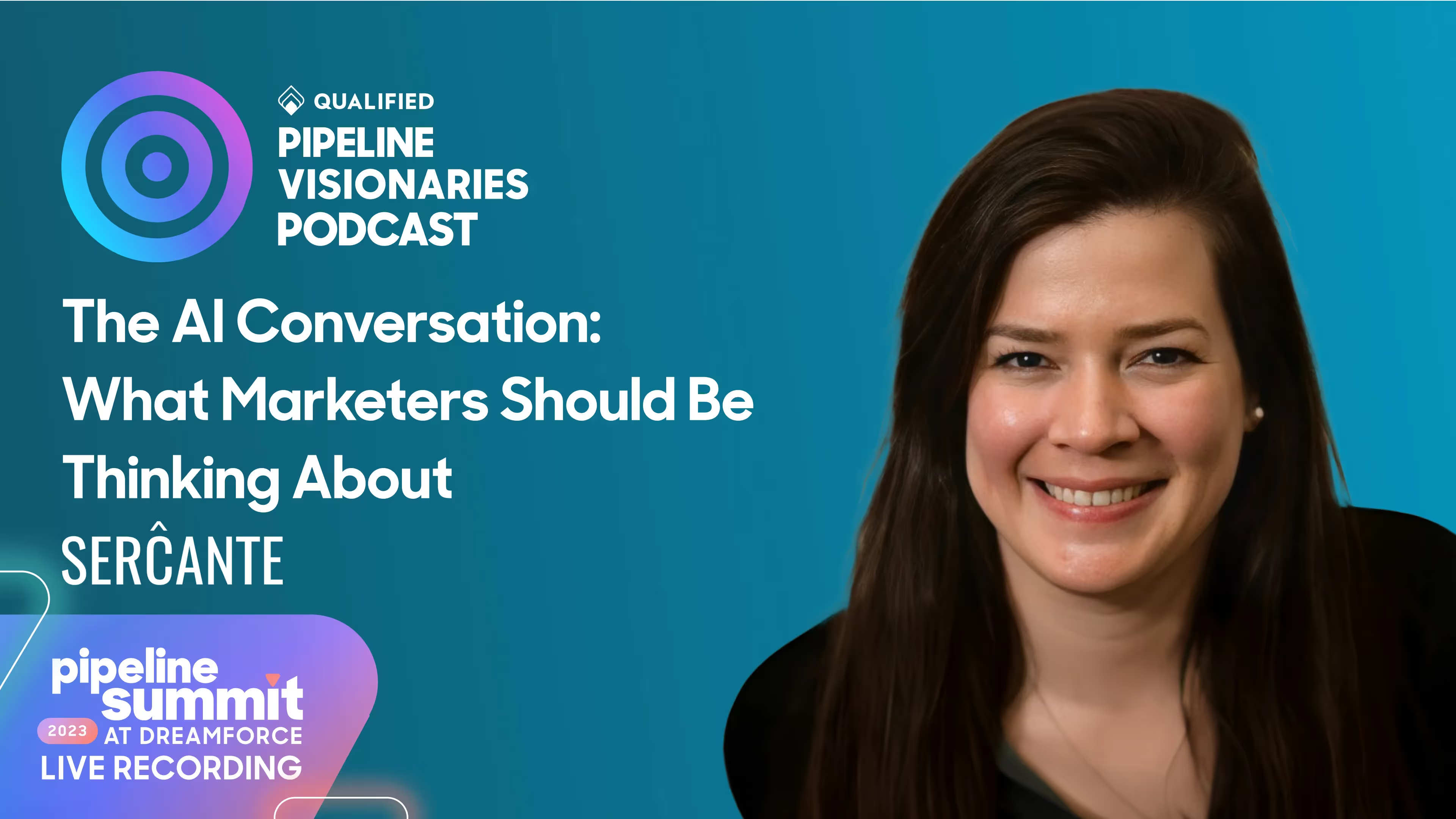The AI Conversation: What Marketers Should Be Thinking About
Andrea Tarrell, CEO at Sercante, believes all marketers should be thinking when it comes to AI.




Andrea Tarrell, CEO at Sercante, believes all marketers should be thinking when it comes to AI.

This episode features an interview with Andrea Tarrell (tuh-rell), CEO of Sercante, making marketing and sales teams wildly successful on the Salesforce platform.
In this episode, Andrea shares what organizations should be thinking about in their marketing when it comes to AI, how companies have overused marketing automation, and why the focus of AI should be on process, content, and technology.
Key Takeaways:
Stay up to date with weekly drops of fresh B2B marketing and sales content.
Andrea Tarrell, CEO at Sercante, believes all marketers should be thinking when it comes to AI.


This episode features an interview with Andrea Tarrell (tuh-rell), CEO of Sercante, making marketing and sales teams wildly successful on the Salesforce platform.
In this episode, Andrea shares what organizations should be thinking about in their marketing when it comes to AI, how companies have overused marketing automation, and why the focus of AI should be on process, content, and technology.
Key Takeaways:
Stay up to date with weekly drops of fresh B2B marketing and sales content.
Andrea Tarrell, CEO at Sercante, believes all marketers should be thinking when it comes to AI.


This episode features an interview with Andrea Tarrell (tuh-rell), CEO of Sercante, making marketing and sales teams wildly successful on the Salesforce platform.
In this episode, Andrea shares what organizations should be thinking about in their marketing when it comes to AI, how companies have overused marketing automation, and why the focus of AI should be on process, content, and technology.
Key Takeaways:
Stay up to date with weekly drops of fresh B2B marketing and sales content.
Andrea Tarrell, CEO at Sercante, believes all marketers should be thinking when it comes to AI.



This episode features an interview with Andrea Tarrell (tuh-rell), CEO of Sercante, making marketing and sales teams wildly successful on the Salesforce platform.
In this episode, Andrea shares what organizations should be thinking about in their marketing when it comes to AI, how companies have overused marketing automation, and why the focus of AI should be on process, content, and technology.
Key Takeaways:
Discover how we can help you convert more prospects into pipeline–right from your website.